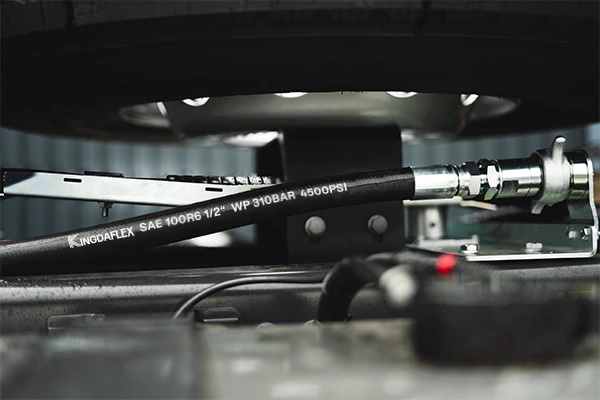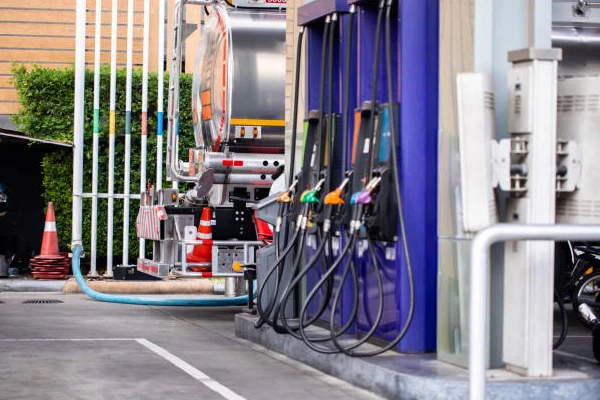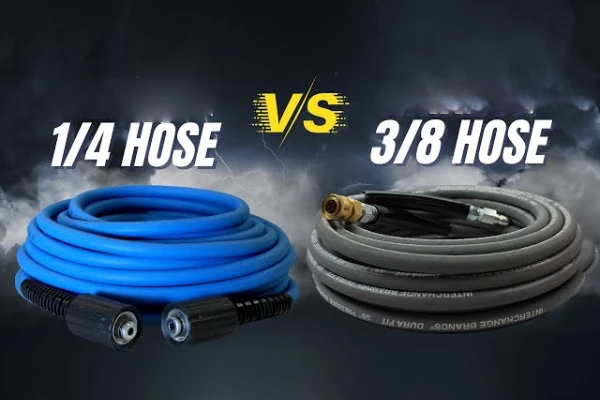A power steering hose leak can be a frustrating and messy problem, leading to a stiff steering wheel and potential damage to your vehicle. Recognizing the signs of a leak early, such as fluid puddles or a whining pump, is crucial for preventing a complete system failure. This blog will explore the common causes behind these leaks.
Understanding why a power steering hose leaks is the first step toward a lasting solution. From the simple effects of old age to more complex issues like component failure, we’ll break down the primary culprits. Knowing the root cause helps you not only fix the current problem but also take steps to prevent future leaks.
What is Power Steering Hose?
A power steering hose is a critical component of a vehicle’s power steering system. It’s a high-pressure line designed to transport hydraulic fluid between the power steering pump and the steering rack.
This pressurized fluid is what provides the hydraulic assistance, making it much easier for the driver to turn the steering wheel. When a hose becomes worn, cracked, or damaged, it can lead to fluid leaks, a stiff steering wheel, and even complete power steering failure.
What Causes Power Steering Hose Leak?
A power steering hose leak can be caused by a variety of factors, from simple wear and tear to more severe mechanical issues. The high pressure and heat of the power steering system constantly put stress on the hoses and their connections. Over time, these components can deteriorate, leading to leaks.
- Age and Wear: The most common cause is the simple aging of the rubber hose. Over years of exposure to heat, vibrations, and constant fluid pressure, the hose material can become brittle, crack, and lose its elasticity.
- Abrasion and Rubbing: Hoses can leak if they rub against other engine components, such as a pulley or the engine block. This constant friction can wear a hole in the outer layer, eventually leading to a rupture.
- Improper Installation: A loose or improperly tightened connection can cause a leak right after a replacement. Additionally, using the wrong type of fluid can cause the internal components of the hose to swell or degrade, leading to failure.
- Corrosion: The metal fittings and connectors on the ends of the hoses can corrode over time, especially in areas where road salt is used, weakening the seal and allowing fluid to escape.
Power Steering Hose Leak Symptoms
Identifying a power steering hose leak early can save you from a costly repair or even a dangerous driving situation. The symptoms are often very noticeable and can appear suddenly or develop over time as the hose and its connections degrade. Paying attention to these warning signs is the best way to prevent a complete system failure.
- Fluid Puddles: A tell-tale sign is a puddle of reddish or amber-colored fluid under the front of your vehicle. This is power steering fluid leaking from a compromised hose, pump, or reservoir.
- Whining or Groaning Noise: When the fluid level drops due to a leak, the power steering pump may start to whine or groan, especially when you turn the steering wheel. This sound is caused by the pump struggling to circulate a low amount of fluid and can indicate that air has entered the system.
- Stiff Steering Wheel: A loss of hydraulic pressure from a leak will make it difficult to turn the steering wheel, especially at low speeds or when parking. The steering may feel heavy, inconsistent, or jerky as you try to maneuver the car.
- Burning Smell: If a leak is severe, the power steering fluid can drip onto hot engine components, like the exhaust manifold, producing a distinct burning smell and, in some cases, smoke. This is a serious symptom that requires immediate attention.
How to Prevent Power Steering Hose Leak?
Preventing a power steering hose leak is all about proactive maintenance and smart driving habits. Because hoses are constantly exposed to high pressure, vibrations, and extreme temperatures, they are prone to failure over time. By taking a few simple preventative steps, you can significantly extend the life of your power steering system and avoid the hassle and cost of a leak.
- Regular Inspections: Visually inspect your power steering hoses for signs of wear, such as cracking, fraying, swelling, or abrasion. Check for any wet spots or drips around the hose connections and on the ground under your car.
- Check and Change Fluid: Regularly check your power steering fluid level and condition. Low fluid is often the first sign of a slow leak. If the fluid is dark, foamy, or has a burnt smell, it may be time for a system flush and refill, as dirty fluid can damage internal components and hoses.
- Avoid “Locking” the Wheel: Avoid holding the steering wheel at full lock (all the way to the left or right) for extended periods. This puts excessive pressure on the pump and high-pressure hose, which can accelerate wear and lead to premature failure.
- Address Noises Promptly: A whining or groaning noise when turning the wheel is a classic sign of low fluid or air in the system, both of which can be caused by a leak. Don’t ignore these sounds; address the problem before it gets worse.
How to Fix a Leaky Power Steering Hose?
Dealing with a power steering hose leak can be a major inconvenience, but fixing it is a manageable task for most car enthusiasts and DIY mechanics. The process involves identifying the source of the leak, replacing the damaged part, and refilling the system.
Step 1: Identify the Leak Source
The first step is to locate exactly where the fluid is leaking from. This requires a thorough visual inspection of all power steering components, including the hoses, pump, and reservoir. Look for wet spots, drips, or signs of a sticky fluid residue along the hose and around its connections.
Once you have identified the leaky hose, determine whether it is the high-pressure or low-pressure line. The high-pressure hose is typically a reinforced, rigid line that connects the pump to the steering rack, while the low-pressure hose is more flexible and returns fluid to the reservoir.
Step 2: Drain the Old Fluid and Remove the Old Hose
Before you can replace the hose, you need to drain the old power steering fluid from the system. Place a drain pan underneath the vehicle and use a pump or siphon to empty the reservoir. Then, using the appropriate wrenches, carefully loosen the fittings to disconnect the old, leaky hose.
Be prepared for some fluid to spill during this process, so have rags and a catch pan ready. Once the old hose is completely disconnected, you can pull it out from its position. It’s often helpful to have the new hose on hand to compare it to the old one before installation.
Step 3: Install the New Hose
With the old hose removed, you can now install the new one. Make sure the new hose is the correct type and length for your vehicle. Carefully thread the new hose fittings into their proper connections on the pump and steering rack, and then tighten them to the manufacturer’s specified torque.
Once the new hose is securely in place, refill the power steering reservoir with the correct type of fluid. Start the engine and slowly turn the steering wheel from lock to lock to bleed the air out of the system. Check the fluid level and add more if necessary until it stabilizes.
Conclusion
In conclusion, addressing a power steering hose leak promptly is essential for the health of your vehicle. By understanding the common causes—from wear and tear to improper installation—you can take the necessary steps to prevent costly repairs down the line. A small leak can quickly escalate, damaging your power steering pump and other vital components, so never ignore the warning signs.
Preventing a power steering hose leak is simpler than you might think. Regular fluid level checks, visual inspections of the hoses, and addressing any signs of a stiff steering wheel or noise can save you a lot of trouble. By being proactive and replacing aged or damaged hoses before they fail, you ensure a smooth, safe, and reliable driving experience.
For durable, leak-proof power steering hoses, trust Kingdaflex. We offer a wide range of high-quality, high-pressure hoses designed to withstand the toughest conditions. Whether you’re a professional mechanic or a car enthusiast, you can get wholesale power steering hoses from us to guarantee a secure and lasting repair.




